Tech Topic | March 2016 Hearing Review
Understanding the RECD and how it is used in hearing aid fitting software allows clinicians to better define fitting protocols for individual listeners.
Real ear measurement allows the clinician to incorporate individual listener’s ear canal acoustics into a hearing aid fitting. Since the introduction of real ear measurement systems, real-ear-to-coupler difference (RECD) measurements have become a clinical reality.
A hearing aid fitting involves many steps including hearing assessment, hearing aid selection, fitting, verification, and evaluation or outcome measurement. Several recently issued practice standard documents relating to clinical audiology have redefined when and how the RECD should be used to fit hearing aids. Specifically, the American Academy of Audiology (AAA) recommends that, when completing pediatric fittings, the RECD be used at the hearing assessment, hearing aid fitting, and verification steps1; AAA also recommends RECD measurement as a useful practice in adult hearing aid fitting.2 RECD measurement is also described as a necessary and routine practice in the prescription of hearing aids for children and adults by the College of Audiologists and Speech-Language Pathologists of Ontario (CASLPO).3,4
Additionally, the new standard on real ear measurement (REM) in North America (ANSI S3.46 2013)5 has provided a definition for the RECD measurement. This definition includes the features of the RECD: 1) The coupler type: HA-1; 2) The coupling type: foam tip or earmold; 3) The transducer: high impedance.
For the purpose of this article, clinical consideration of coupler and coupling type will be presented in the context of use with an Audioscan® Verifit RE770 RECD transducer. More details related to transducer effects and RECD measurement can be found in Bagatto et al.6
The new standardized RECD has recently been incorporated into Verifit hearing aid measurement systems resulting in some small but important changes to how the clinician might set up current hearing aid fittings. Let’s run through some common questions to better understand how the RECD falls into the “big picture” of hearing aid fitting (or on the screen of your hearing aid measurement system). The Audioscan® Verifit system will be used for demonstration; examples will be shown for both the Verifit 1 (VF-1) and the Verifit 2 (VF-2) models.
How is the RECD used when fitting hearing aids?
In many fittings, the RECD is used twice before we see the SPLogram and fitting targets on the screen of a measurement system:
#1) To estimate hearing thresholds in sound pressure level (SPL): HL threshold + RECD + reference equivalent threshold sound pressure level (RETSPL) values = real ear threshold.
#2) To predict hearing aid output from coupler measures (note: in Audioscan systems, the MLE is filtered into the test signal): Coupler SPL or gain + RECD + microphone location effect (MLE) = predicted real ear SPL or gain.
Do I need to measure an RECD if I verify using “real” real ear measurement?
Although direct verification of the real ear aided response (REAR) does not use the RECD at all, you may still need an RECD to accomplish use #1. The patient’s real ear SPL threshold still gets converted behind the scenes using an RECD in the equation when thresholds are measured with insert phones (the RECD is not applied to thresholds measured with headphones). This may make the displayed thresholds on the SPLogram more accurate for those patients who have unusual ear canal acoustics and result in more accurate target estimation for use in the hearing aid fitting. In comparison, your hearing aid measurement system will need both types of RECDs for coupler-based verification to calculate both the real ear SPL threshold and the predicted real ear SPL or gain.
Are RECDs measured with foam tips and earmolds the same?
The short answer is no. The long answer includes knowing that coupling type (ie, foam tips or earmolds) does have a direct impact on measured RECD values. This is mainly because the tubing attached to a foam tip is shorter than that attached to most earmolds. RECDs measured with an earmold often have a high frequency roll-off compared to those measured with a foam tip.7 For this reason—and because we don’t want to have to complete two RECD measurements—it is best to try and match your coupling selection for the audiogram and RECD. Matching coupling type allows you to complete one RECD measurement that can serve both purposes. Here are three examples of matched protocol for use in hearing aid fitting:
1) RECDs for babies/young children:
a) Measure hearing thresholds with insert phones coupled to personal earmold.
b) Measure RECD once by coupling the RECD transducer to personal earmolds.
c) Complete coupler-based hearing aid verification.
This first example assumes little or no venting has been included in the fitting. A behind-the-ear (BTE) device would attach directly to an HA-2 coupler (VF-1) or an HA-4 coupler (VF-2) during verification.
2) RECDs for most adult listeners with a vented/open fitting:
a) Measure hearing thresholds with insert phones coupled to foam tips.
b) Measure the RECD once by coupling the RECD transducer to foam tips.
c) Complete verification in the real ear.
3) RECDs for adult listeners wearing custom devices (eg, ITEs, ITCs, CICs) or minimally vented RIC devices—a matched protocol:
a) Measure hearing thresholds with insert phones coupled to foam tips.
b) Measure the RECD once by coupling the RECD transducer to foam tips.
c) Complete coupler based verification (the clinician would need to putty the hearing instrument to the coupler).
What if I need one RECD coupling type, but I have only measured the other?
What if the audiogram was measured, for example, with insert phones coupled to foam tips, the RECD was measured with insert phones coupled to a personal earmold, and the device (eg, a BTE) was verified in the coupler? This is referred to as a “mismatched protocol,” which can result in fitting errors. To reduce such errors, the Verifit applies corrections that happen within the system software. In older versions of Verifit software, the RECD would be used as measured, even if the coupling type was not matched. The current and more accurate approach now being used is to automatically generate foam tip to earmold correction values.7
For example, if the RECD was measured with an earmold coupling, but a foam tip RECD is needed, correction values are applied within the software to generate an individually predicted RECD for the foam tip coupling. Alternatively, an earmold RECD may be individually-predicted from a measured foam tip RECD by a reversal of this process. To be able to apply such correction values, it is necessary that the clinician define what type of RECD has been measured, along with some details of the hearing assessment and hearing aid verification setup. If a coupling mismatch is detected in the software, correction values are applied automatically.
This brings us to the first important change to be aware of: The VF-1 and VF-2 now require the user to select the RECD coupling methods (eg, foam tip or earmold, Figure 1). This is done using the pull-down menu option that best describes the coupling method used. The “HL transducer” menu option selects the coupling used to measure hearing thresholds, and the “RECD coupling” option selects the coupling used during the RECD measurement. Audioscan systems that include the new earmold foam tip corrections are the Verifit VF-1 and RM500SL systems (v3.12 and up), the Axiom (v1.8 and up), and the and VF-2 (v4.2 and up).
What coupler should I use for hearing aid verification?
Although the new standard includes the HA-1 coupler, coupler type conversions (eg, between HA-1 and HA-2) are simple, well-understood, and are easily transformed by hearing aid fitting software. The HA-2 is commonly used in verification of BTE devices with the VF-1. This coupler type is no longer used with the VF-2 for hearing aid fitting, except for when completing ANSI testing; a 0.4cc coupler is used with this system instead since it measures a Wideband RECD (WRECD) and supports extended-bandwidth verification. Automatic software corrections allow the standard HA-1 RECD to be constructed and reported, even in the case when you did not measure your RECD with that coupler type. Therefore, it is possible to complete measurements using different coupler types and have the software reference them back to the “standard” RECD. RECDs are labelled as “HA-1” on printed tables of values for this reason.
Example Applications
The following section will go through different verification examples that show possible combinations in coupling and coupler types. These differing combinations can be used when trying to achieve a specific “matched” protocol of RECDs. However, this section also highlights some pros and cons of the different combinations, and the need to label each RECD type when setting up a hearing aid fitting. The use of accurate labeling ensures that the RECD can be corrected and used as needed in the software when there is a mismatch in the protocol. A BTE hearing aid will be used for demonstration purposes.
One verification choice is to connect the HA-1 or 0.4cc coupler to the earmold and BTE device using putty to secure the earmold to the coupler. This procedure requires specific infection control strategies to avoid transferring microbes to the putty, and is not feasible with all types of earmold material.
A putty-to-the-coupler example is shown in Figures 2 and 3, using an HA-1 coupler on the VF-1 (Figure 2) and using 0.4cc coupler on the VF-2 (Figure 3). The corresponding menu options, illustrating the instrument type and test box coupling method have been included for Figures 2-5.
Alternatively, HA-2 couplers and HA-4 couplers with TRIC adaptors and specially designed earmold tubing called the “earmold substitute” offer the advantage of being easier and cleaner when used with BTE devices because they do not require the use of putty.
An example of this method is shown in Figures 4 and 5 for the VF-1 using an HA-2 coupler (Figure 4) and the VF-2 using an HA-4 coupler (Figure 5). If setting up the 0.4cc wideband couplers is new to you, a tutorial is offered at: https://www.youtube.com/watch?v=vOAq39Tfb1Y.
What changes should I be aware of when measuring or entering RECDs?
RECD values displayed will depend on the hearing aid system, coupler choice, and software version.
VF-1 systems require RECD coupler calibration using a 2cc HA-2 coupler, regardless of software version. The VF-2 uses a 0.4cc coupler with a TRIC adaptor to connect the RECD transducer.
Figure 6 shows a set-up for measuring the coupler portion of the RECD on the VF-2. Once calibrated, the RECD can be measured on-ear. The VF-1 systems with software prior to version 3.12 provide HA-2 RECD values. As per the new standard, versions 3.12 and above convert and display RECDs in HA-1 coupler values when viewing the table of values. VF-2 systems provide a WRECD, which is measured in a 0.4cc coupler and converts to HA-1 coupler values when viewing a table of values.
Previously measured RECDs can be entered into the software; however, the system must account for the coupler type used in the original measurement. On-screen prompts assist in the proper selection of a coupler type. RECD values from older printouts may not be labelled as HA-2 or HA-1.
These older RECD were likely measured with an HA-2 coupler and can be entered as such.
More information about measuring RECDs
A more detailed description of RECD and WRECD measurements can be seen in a video provided by Audioscan at: https://youtu.be/p57vcjTUGYA. Further details related to specific software updates for the VF-2, VF-1, and Axiom can be found at the Audioscan website.
Understanding the RECD and how it is used in hearing aid fitting software allows the clinician to better define hearing aid fitting protocols for individual listeners. Clinicians are faced with many different scenarios that determine how they measure the RECD. For example, children may outgrow, lose, or accidentally destroy earmolds, making the measurement of an earmold RECD a challenge. Current hearing aid systems now allow the clinician to label the RECD use and type so a foam tip or earmold RECD can be used to predict the appropriate type, and use it as needed.
Acknowledgments
The University of Western Ontario has received financial support from Audioscan for use in the development and completion of research studies related to accuracy of real ear measurement. The authors thank Chris Stokes-Rees and John Pumford at Audioscan for their contributions to this article.
References
-
American Academy of Audiology (AAA). AAA Clinical Practice Guidelines: Pediatric Amplification (2013). Available at: http://audiology-web.s3.amazonaws.com/migrated/PediatricAmplificationGuidelines.pdf_539975b3e7e9f1.74471798.pdf
-
American Academy of Audiology (AAA). Guidelines for the audiologic management of adult hearing impairment (2006). Available at: http://audiology-web.s3.amazonaws.com/migrated/haguidelines.pdf_53994876e92e42.70908344.pdf
-
College of Audiologists and Speech-Language Pathologists of Ontario (CASLPO). Preferred practice guideline for the prescription of hearing aids for children (2014). Available at: http://www.caslpo.com/sites/default/uploads/files/PPG_EN_Prescriptions_Hearing_Aids_Children.pdf
-
College of Audiologists and Speech-Language Pathologists of Ontario (CASLPO). Preferred practice guideline for the prescription of hearing aids to adults (2014). Available at: http://www.caslpo.com/sites/default/uploads/files/PPG_EN_Prescriptions_Hearing_Aids_Adults.pdf
-
American National Standards Institute (ANSI). Methods of Measurement of Real-Ear Performance Characteristics of Hearing Aids. ANSI/ASA S3.46-2013. Available at: http://webstore.ansi.org/RecordDetail.aspx?sku=ANSI%2FASA+S3.46-2013
-
Bagatto M, Moodie S, Scollie S, Seewald RC, Moodie S, Pumford J, Liu RKP. Clinical protocols for hearing instrument fitting in the desired sensation level method. Trends Amplif. 2005;9(4):199-226.
-
Moodie S, Pietrobon J, Rall E, Lindley G, Eiten L, Gordey D, Davidson L, Moodie KS, Bagatto M, Magathan Haluschak M, Folkeard P, Scollie S. Using the real-ear-to-coupler difference within the American Academy of Audiology Pediatric Amplification Guideline: Protocols for applying and predicting earmold RECDs. J Am Acad Audiol. 2016; Available at: http://aaa.publisher.ingentaconnect.com/content/aaa/jaaa/pre-prints/content-AAA_JAAA_15-08
About the authors: Susan Scollie, PhD, Sheila Moodie, PhD, Marianne Hawkins, MClSc, and Danielle Glista, PhD, are researchers at the National Centre for Audiology at Western University in London, Ontario.
Correspondence can be addressed to Dr Glista at: [email protected]
Original citation for this article: Glista D, Hawkins M, Moodie S, Scollie S. Understanding How RECDs Fit into the “Big Picture” of Hearing Aid Fitting. Hearing Review. 2016;23(3):26.?



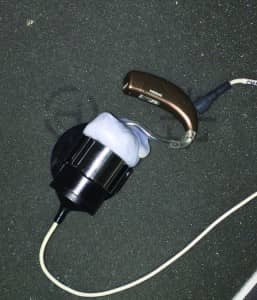
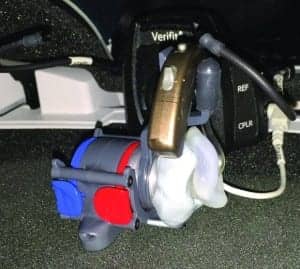
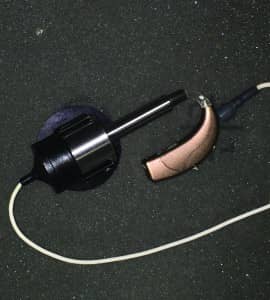
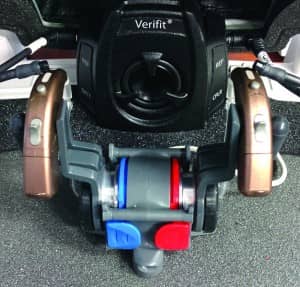
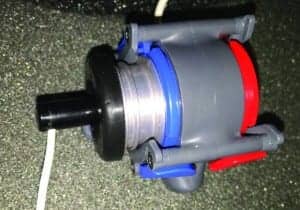




Hearing aid fittings can be complex and stressful for the patient. Understanding which hearing aid fixture applies to which requires practitioners who truly care for their clients.
–Kay, Pacific Audiology in Salem, Oregon